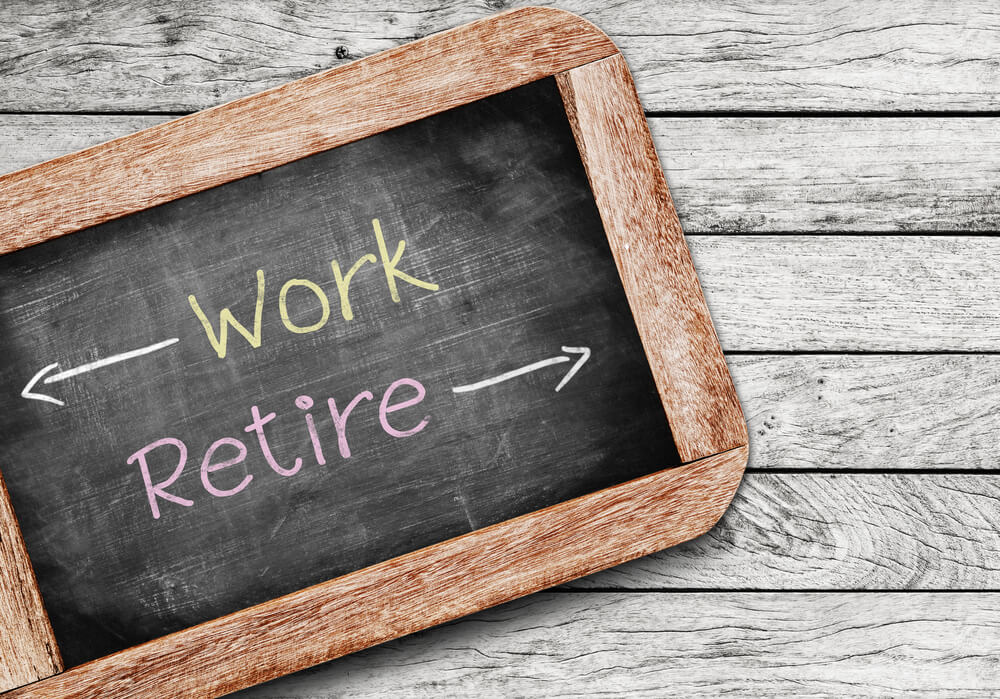Government Needs to Fill One Million Jobs

The July 2022 report from the Bureau of Labor Statistics shows government agencies have 1.085 million job openings. That is 15% of the “public administration” workforce. The total is 100,000 higher than a year ago. Over 900,000 are state and local jobs.
Prior to the COVID crisis the total was 690,000. A decade ago, in 2012 there were 530,000 vacancies.
In the closely related “education and health services” sector, the vacancy total is 2.176 million. That’s 275,000 higher than a year ago.
Writers have referred to the mounting vacancies as a “crisis” for specific employer groups.
- America’s Education Crisis Is Costing Us Our School Leadership.
- Addressing Staffing Crisis in Prisons and Jails
- Tackling the Staffing Crisis: Healthcare Workforce Challenges, Trends, and Innovations
- The Crisis Facing Nursing Homes, Assisted Living and Home Care for America’s Elderly
Unless something changes, agencies should expect continued loss of experienced workers. Excluding workers in education and health services, BLS data shows 460,000 employees are 65 or older. An added 1.5 million are ages 55 to 64. Together that’s 27% of the 7.4 million employees working in public administration.
Added to this is a steady decline in college enrollments, especially among males. There are 4 million fewer students in college now than 10 years ago. The future labor force for jobs requiring a degree is shrinking. That’s demographics and a growing skepticism that the 4-year investment is worth it.
The problem emerged after the 2008/9 recession but except for an occasional article was ignored. Now it is affecting vital public services. If public employers continue to rely on the same workforce policies, the demographics show clearly the vacancies will increase. The most practical answer is tapping the millions of older workers who may have “retired” but are not ready to stop working.
YOUNG WORKERS ARE NOT THE SOLUTION
The newly released report from the MissionSquare Research Institute, State and Local Workforce 2022, confirms the hiring problems. In addition to the headline recruiting problems — police, fire, corrections, nurses, engineers – the reports lists “hard-to-fill positions”: Maintenance work/labor, planning, utilities, recreation programs, etc. It’s a mixed bag of jobs. The report confirms the number of applications is down.
That is consistent with a comment from the President/Co-Founder of Careers In Government, Michael Hurwitz,
“It is incredibly hard to get job seekers off the sidelines and apply. The numbers of job seekers visiting our site has never been higher. . . the problem is that they are window shopping.”
The past year was the “Great Resignation” – 47 million workers quit in 2021 – but they obviously did not move to jobs in government. Recent surveys show a significant percentage of employees are still looking for better jobs. A search failed to find a report of government employees planning to switch jobs.
A Wall Street Journal column from 2005 commented that even after the 9/11 crisis new graduates “avoided jobs in the US government.” A 2017 study of the jobs chosen by the new graduates from the country’s best public policy programs found only 34% chose government jobs.
Over the past year frequent columns have focused on how employers are using cash compensation – salaries, salary increases and bonuses – to recruit and retain talent in high demand fields. Pay programs based on step or across-the-board increases are out of sync with today’s staffing practices.
The section of the report, “Wage and Benefit Competitiveness”, acknowledges public employers are “often constrained by their existing salary structures and the budget processes”. Only 44% indicated “wage compensation as competitive” – which is the lowest percentage in the seven years this question was asked.
But that’s not a useful question at a time when employers are raising pay levels 8-10 percent or more to compete for high demand job skills. In the report, pay increases are notably missing from a list of over 30 practices used “to encourage employee retention and development” (far down the list, 16% offer “bonuses”). Although a recession is expected, websites over the past year have frequently mentioned companies are relying on aggressive pay practices to attract or retain talent.
As a consultant who has served as an instructor for IPMA-HR workshops on salary management, I can say definitively government pay programs are central to staffing problems. Noncompetitive pay levels as well as the continued reliance on tenure-based increases make it impossible to reward the best workers. There was a time when public agencies could post job openings and wait passively for applicants. That’s clearly not working today.
But it’s more than pay. In a survey of graduating seniors conducted by the National Association of Colleges and Employers, salary was eighth on the list of desired job attributes. They were looking for an engaging company culture, flexible hours, a collaborative environment, teamwork, respect and “fair pay”.
Employee benefits are important but the most valuable and costly benefit, a traditional defined benefit pension, is of no value to young, new hires. For them the important “benefits” are flexible hours, paid time off, work-life balance, development opportunities, etc.
A recent Gallup study, “Unleashing the Human Element at Work: Transforming Workplaces Through Recognition” highlights a core problem. From the executive summary,
“To build the right workforce for the future and leverage its capabilities, leaders must take a human-centered approach to building their employee experience and employer brand. It starts by demonstrating to employees they are valued by recognizing their contributions.”
I doubt if there is much argument — the least effective HR system in government is employee performance management combined with pay increases based on seniority. At the federal level, performance ratings are badly inflated and have lost credibility. In other sectors, the practice is often criticized but virtually universal. The importance of performance feedback and recognition has been the subject of several posts on the Forbes website, e.g.,“ Today’s Workers Are Hungry For Feedback; Here’s How To Give It To Them”.
The MissionSquare report also lists eleven “sought after skills” – analytical/critical thinking, interpersonal, management, etc. New graduates would be unlikely to demonstrate any of the skills except “social media”.
If there is a recession, business layoffs could trigger increased interest in government jobs but it’s unlikely private sector employers will make a long term commitment.
OLDER WORKERS READY FOR HIRE
Since the start of the COVID crisis, millions of older workers – 55 and over – voluntarily or involuntarily left their jobs. In 2020 they were laid off or lost their jobs when their worksite closed. In 2021 they accounted for a growing percentage of the 47 million who quit as the year unfolded.
For those who switched to working at home — older and younger workers – it gave them the time to assess their jobs. The increased autonomy, flexibility and work/life balance working made them hungry for something better. Older workers were glad to get away from the ageist jokes and comments.
However, countless older workers, after looking unsuccessfully for a new job for weeks and months, gave up and decided to retire. As of October 2021, there were 3.3 million more retirees than in January 2020.
Significantly, employers are able to discriminate, ignoring applicants over age 40, because the courts have ruled the use of the word “employee” limits the protection of the Age Discrimination in Employment Act to those already on the payroll, not job applicants.
The common problem is the ageist, biased stereotypes that emerged decades ago but today are no longer accurate or relevant. Jobs requiring strength and agility have declined steadily in the US economy. (BLS reports only 3.4% of civilian jobs require “very heavy” lifting.) The years of experience of older workers makes them better at solving problems. Studies confirm older workers often perform better than younger workers, and with their work ethic are far less likely to quit.
Forbes, 10/31/2017, “Why Older Workers Are A Major Value Added To The Workforce”
Prior to the COVID crisis, there was a trend for older workers to defer retirement and work into their late 60s and 70s. Thousands of physicians, lawyers, professors, consultants, and entrepreneurs continue to work in part because they find great satisfaction in what they do. It gives them purpose and identify, and a good income. The pandemic altered the trend somewhat but it shows clearly older workers can be fully productive. Their independence enables them to do that.


An important early step is acknowledging and working to erase age bias. It’s often subtle but, unfortunately very common.
The experience of millions of older “employees” is very different. Millions, going back decades, have been encouraged or forced to retire before they planned. Many would like to work; many need the added income. Vanguard data shows the median – half above, half below – savings at retirement is only $33,472. That’s far below what’s need to retire and live comfortably
The latest Social Security data show there are 50 million retirees and their spouses receiving benefits — an average $20,000 a year. Significantly, if they did not receive the benefits, nearly 38% of the country’s retirees would have incomes below the official poverty line. With the benefits, about 10% have that problem.
To put that into perspective, the 2022 poverty line income for a couple is only $18,310. The U.S. has over 60 million individuals 62 and older, the age when workers are eligible for Social Security. That means as many as 6 million “elderly” are living below the poverty level. That should be unacceptable.
There also countless others who have been unable to find work but not yet eligible for federal benefits. Many need to augment their income and would love to find a job.
Significantly, when workers defer their retirement, they continue to participate in employer-provided benefits and that helps to ease the political pressure to reduce the costs of Social Security and Medicare.
RETHINKING WORK OPPORTUNITIES TO ATTRACT OLDER WORKERS
There are three traits that differentiate older workers from other job seekers.
First, they are not looking for long term career building opportunities. A common goal is to secure a “bridge” job until they reach the point when they are ready to stop working. In those roles, they are not barriers to the careers of younger workers. The CBS Evening News report of a former FBI executive now driving a school bus is a great example.
Second, many are already working as “1099” or “gig” workers. Paying workers outside of the rules of government pay programs gives them and employers flexibility in how they are used. If they already receive Social Security and Medicare benefits, they typically agree to work for salary only, saving the cost of benefits.
Third, their experience enables them to work with minimal supervision, including remotely. Managers can prescribe job responsibilities and then back away, monitoring work results with metrics. Older workers can also serve as mentors for less experienced workers.
A fourth trait that should not be ignored is their work ethic. It makes them more valuable and diminishes the possibility they will leave for a better job. When employees quit, it’s costly.
Paramount in their job search is flexibility. That can be hours per day, days per week, where they work, and/or the discretion to take time off as needed (e.g., to care for a spouse). A core question for all employers is: Does a job truly need a worker to commit to 8 hours a day, 5 days a week?
Significantly, the report, State and Local Workforce 2022, makes it clear public agencies are already contracting with gig workers, often in roles that older workers can fill with little training. The practice needs to be expanded significantly. Are there additional jobs that can be performed part time? Working remotely? Job sharing? Job sharing between two or three agencies? Relying on traditional civil service staffing practices will limit the possibilities.
Tennessee provides a practical answer to this problem. The state’s retirement system created a mechanism that allows retirees to return to work at a TCRS-covered employer for 120 days without losing their retirement benefits. Rebecca Hunter, the state’s former HR commissioner, commented, “This benefit has worked effectively for both the state and the retiree. It has helped older workers phase into retirement as it allowed them to work part-time, while allowing the agency to benefit from their continuing knowledge.”
An important early step is acknowledging and working to erase age bias. It’s often subtle but unfortunately very common. It varies by level and across teams, locations and occupations. The problem is closely related to the goal of DEI advocates (who often fail to acknowledge more than half the older workforce are women and minorities). It’s important to make leaders aware of the problems.
The first step is developing a data-driven understanding of the current over-55 workforce – where they work, their years of service, their occupations, and the gender/minority makeup of the group. The analysis should also compare their work status against other age groups for promotions, hiring, pay increases, ratings and turnover. That’s basic to understanding where problems exist.
That analysis should be linked to data related to performance problems, and analyzed further to determine if the vacancies, performance problems and evidence of discrimination are related. That will help convince leaders where fresh thinking is needed. They need to support change initiatives.
It would be valuable to follow the analyses with group discussions of what the data show. Mixed age and service groups would be ideal although that could trigger conflicting ideas. Groups limited to older workers would raise the prominence of problems. They know where problems exist and would like to see them addressed. A key is creating a workplace where older workers feel valued and respected.
Older workers would also be helpful in contacting their local counterparts along with the places and websites valuable for recruiting. Local unions are an example. Contacting groups like AARP Foundation’s Senior Community Service Employment Program could be productive.
These are steps individual agencies could undertake to address specific vacancy problems
HR specialists should begin a review of job descriptions for education or skill requirements. This would be a great reason to shift to documenting essential job skills. Professional associations often show key skills on their websites. ‘Competency-based management’ is emerging as an HR best practice idea. It’s an important trend that supports both DEI and older worker goals. Key skills should be prominent in job postings. That opens the recruiting to applicants from different career paths requiring the same skills.
All the evidence confirms there are millions of older, sometimes “retired” workers who have needed skills and are interested in continuing or restarting their work lives. The income is important but many simply enjoy what they do or the people they work with. It enables them to feel useful and productive. Society benefits because it reduces the need for government-funded benefits. Job boards like Careers in Government are ready to support strategies to fill those mounting vacancies.
Want new articles before they get published? Subscribe to our Awesome Newsletter.

CAREER ADVICE

GOV TALK




